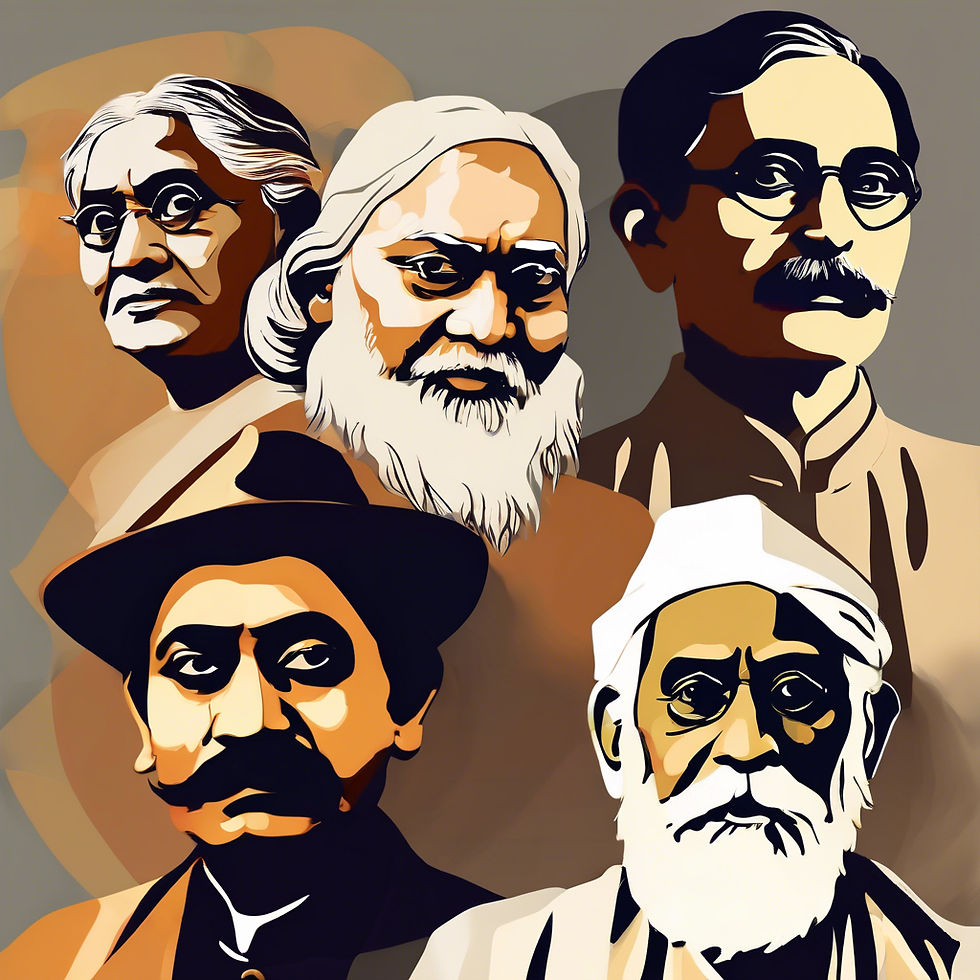Freedom Fighters You Didn’t Know Were Artists Too
- CAMI Info
- Aug 22
- 2 min read
The Indian freedom movement was not only built on political activism, protests, and speeches—it was also shaped by creativity. Several key figures in India’s struggle for independence were artists, writers, and poets whose work inspired generations. These artistic freedom fighters of India used their creative expression to communicate ideas, awaken patriotism, and preserve national identity.

Art as a Tool for Resistance
During British colonial rule, art was more than aesthetic—it became a medium of protest. From poetry that stirred the soul to paintings that symbolised national pride, creativity was one of the quiet yet powerful forces behind India's fight for freedom.
Let’s explore a few remarkable individuals who blended artistic expression with political resistance.
Sarojini Naidu – The Nightingale of India
Known for her passionate oratory and leadership, Sarojini Naidu was also a celebrated poet. Her poetry captured the spirit of India—its landscapes, people, and hopes for freedom. Collections like The Golden Threshold and The Bird of Time showcased her lyrical style, blending patriotism with beauty. Her writings resonated across borders, making her an early cultural ambassador for the country.
Rabindranath Tagore – Poet, Painter, Philosopher
Tagore’s contributions to India’s intellectual and artistic heritage are unmatched. The first Asian Nobel laureate, he was not only the author of India’s national anthem but also a prolific painter and educator. Through works like Gitanjali and his later abstract paintings, Tagore advocated for cultural self-expression and the rejection of colonial domination in thought and aesthetics.
Abanindranath Tagore – Creator of Bharat Mata
A key figure in the Bengal School of Art, Abanindranath Tagore used traditional Indian styles to portray nationalist themes. His iconic painting Bharat Mata depicted India as a serene, powerful mother—symbolising the nation in a spiritual, non-violent light. His art was a direct response to Western styles promoted by the colonial system and helped redefine Indian visual identity.
Nandalal Bose – Art for the People
As a disciple of Abanindranath Tagore, Nandalal Bose blended Indian themes with visual storytelling. Mahatma Gandhi chose Bose to illustrate the original copy of the Constitution of India. His artworks during the freedom movement captured everyday Indian life, celebrating the dignity and resilience of the common people.
Inspiring the Next Generation of Creative Patriots
These artistic freedom fighters of India showed that creativity could be as powerful as any political tool. They used poetry, painting, and performance to communicate resistance, unity, and vision—and their legacy continues to inspire young minds today.
At the Children’s Art Museum of India (CAMI), we believe in nurturing this creative spirit. As part of our Independence Month celebrations, we invite young artists to participate in “My India, My Freedom”, CAMI’s August Artfest. Children can submit artwork inspired by India’s journey, heroes, or what freedom means to them today. Selected entries will be featured on our digital gallery and social media platforms.
#ArtisticFreedomFighters #SarojiniNaidu #TagoreLegacy #AbanindranathTagore #IndianIndependenceArt #CAMIBlog #CreativeResistance #MyIndiaMyFreedom #AugustArtfest #ChildrensArtMuseumOfIndia




Comments